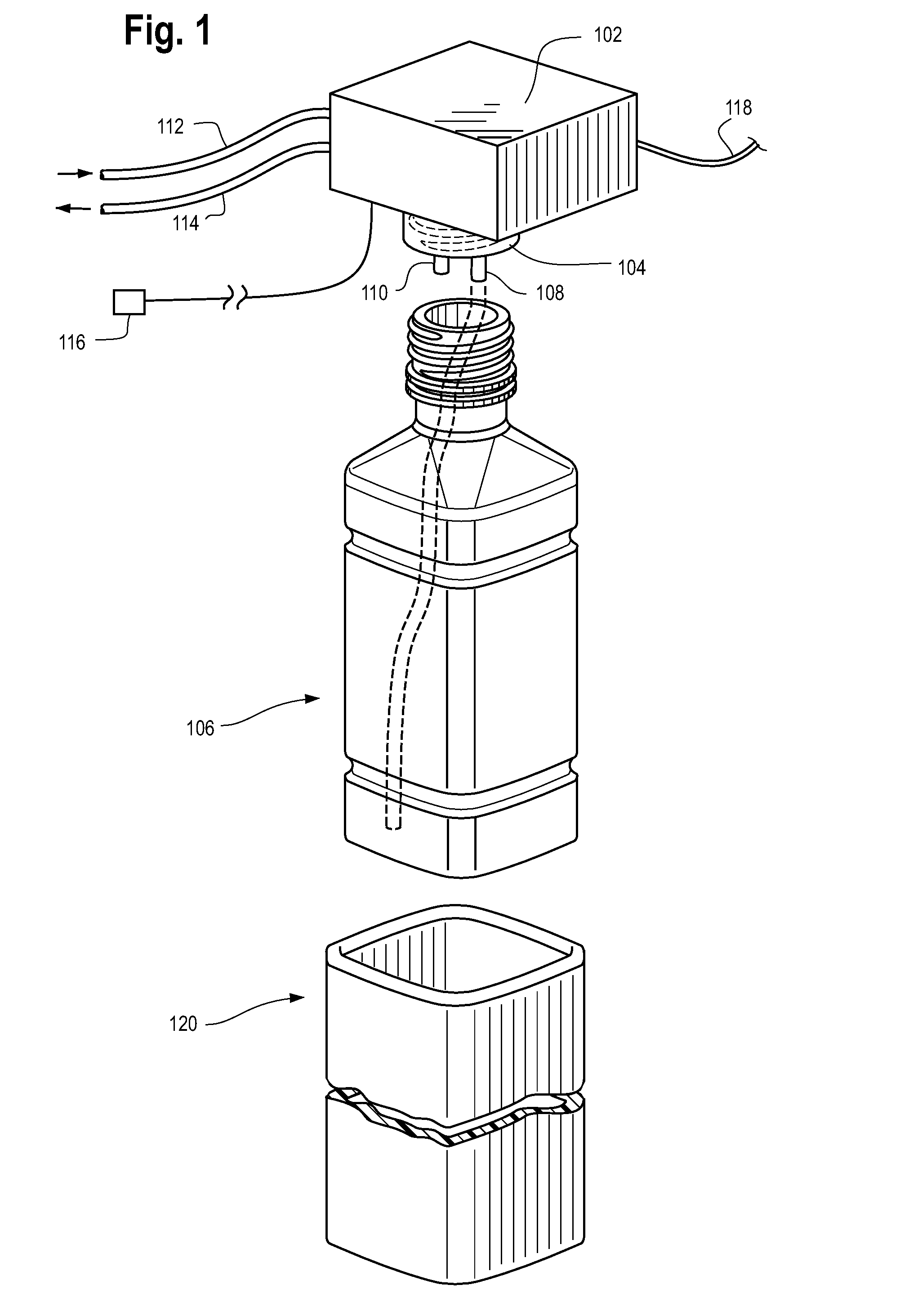Temperature management systems
a temperature management and system technology, applied in the field of temperature management systems, can solve the problems of inability to use the therapy, and inability to meet the needs of patients, etc., and achieve the effects of reducing the risk of death
- Summary
- Abstract
- Description
- Claims
- Application Information
AI Technical Summary
Benefits of technology
Problems solved by technology
Method used
Image
Examples
example 1
[0141]In order to achieve a desired temperature change per unit time, a heat exchanger of the present technology has sufficient heating and cooling capacity. The mechanism of heat transfer into or out of the patient is similar for both the heating and cooling case.
[0142]For a thermal system:
dQ / dt=mCpdTp / dt, where:
[0143]Q=Heat energy transferred from patient (J)
[0144]Cp=thermal capacitance of the patient (J / kg° K)
[0145]m=patient mass 165 lbs (75 kg)
[0146]dTp / dt=Rate of Change of Temp (° C. / s)
[0147]In this example, the average thermal capacitance of a patient, which is 3470 J / kg° K, can be used. Therefore, at a targeted cooling rate of 1.0° C. / hour, 72 W of cooling are required. Similarly for a rate of temperature rise of 0.1° C. / hour, 7.2 W of warming are required.
[0148]Parasitic system effects will occur, such as heat lost or gained through the auxiliary tube set, and / or convective or conductive losses around other system components. Accordingly, a suitable load factor may be applie...
example 2
[0151]A Gaymar Medi-Therm III (Model MTA7900) chiller was set up in standard fashion to perform temperature management of a patient. A simulated patient was utilized consisting of an insulated body of water, weighing approximately 20 kg, at baseline temperature of approximately 37° C. An exemplary esophageal cooling device was connected to the Medi-Therm chiller, with the addition of in-line connectors to allow for thermocouple placement into the inlet and outlet streams of coolant through the esophageal cooling device. After turning on the Medi-Therm III and setting goal patient temperature to 37° C., a steady state was reached with coolant temperature equal to simulated body temperature (37° C.). At this point, Tinlet was equal to Toutlet, giving a delta T of 0. To determine the maximum delta T, the entire esophageal cooling device was submerged into the simulated patient and the Medi-Therm was set to cooling mode, with the coolant set point set to the coldest option (4° C.). As t...
PUM
 Login to View More
Login to View More Abstract
Description
Claims
Application Information
 Login to View More
Login to View More - R&D
- Intellectual Property
- Life Sciences
- Materials
- Tech Scout
- Unparalleled Data Quality
- Higher Quality Content
- 60% Fewer Hallucinations
Browse by: Latest US Patents, China's latest patents, Technical Efficacy Thesaurus, Application Domain, Technology Topic, Popular Technical Reports.
© 2025 PatSnap. All rights reserved.Legal|Privacy policy|Modern Slavery Act Transparency Statement|Sitemap|About US| Contact US: help@patsnap.com



